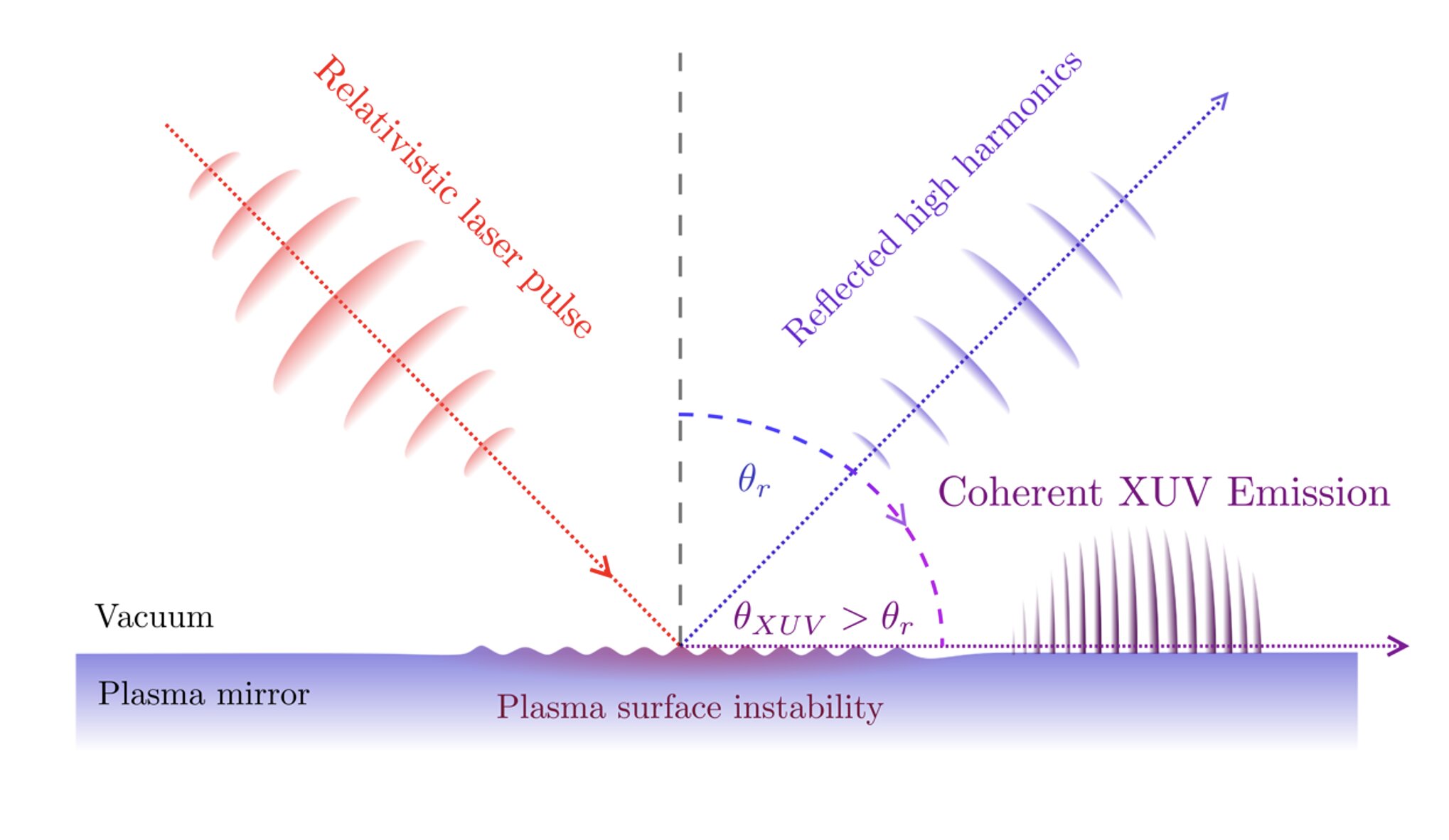Interactions between intense laser pulses and plasma mirrors have been the focus of several recent physics studies due to the interesting effects they produce. Experiments have revealed that these interactions can generate a non-linear physical process known as high-order harmonics, characterized by the emission of extreme ultraviolet radiation (XUV) and brief flashes of laser light (i.e., attosecond pulses).
Researchers at The Extreme Light Infrastructure ERIC in Czechia and Osaka University in Japan recently uncovered a surprising transition that takes place during interactions between intense laser pulses and plasma mirrors. This transition, marked by an anomalous emission of coherent XUV radiation, was outlined in a paper published in Physical Review Letters.
“Relativistic oscillating mirrors are a fascinating concept with great potential for intense attosecond pulse and bright XUV generation,” Marcel Lamač, one of the researchers who carried out the study, told Phys.org.
“We were reinvestigating some of the assumptions held in previous works and found that strong self-modulation can occur during the intense laser-mirror interaction, changing the properties of surface-emitted extreme ultraviolet (XUV) radiation, which can then propagate anomalously along the surface.”
The interesting discovery by Lamač and his colleagues was made while they were testing predictions of previous work in the field. The team carried out various numerical, multidimensional particle-in-cell simulations at extremely high resolutions, with the goal of better understanding the interplay between electrons and ions during the interaction of solid density plasmas with intense lasers.
2023-12-02 19:41:02
Source from phys.org
